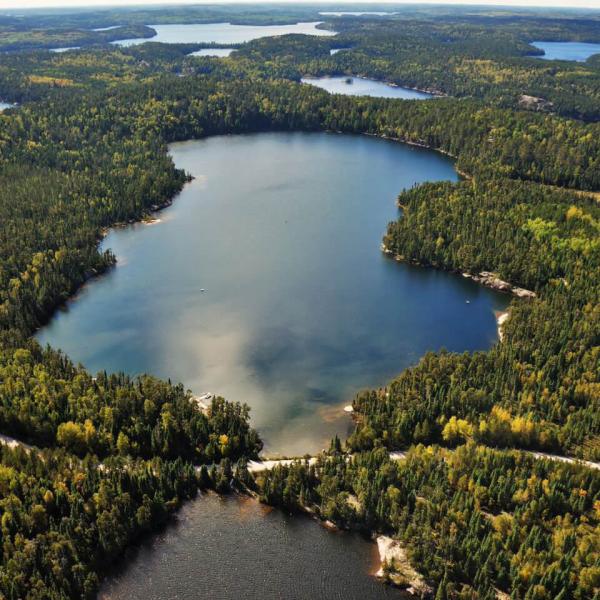Research in Canada is changing the world for the better, solving challenges from prosperity to pollution and unlocking new ways of living healthier, more sustainable lives. But, like any ambitious endeavour, research has a footprint; it requires energy, space and materials. Recognizing this, many labs across the country are finding ways to reduce their waste and emissions to help minimize their impact. Here, we tip our hat to some of these green innovations.
Experimental Lakes Area: Getting off diesel with solar panels
This summer, the International Institute for Sustainable Development Experimental Lakes Area (IISD-ELA) will begin installing solar panels to provide 300 kilowatts of clean electricity to its entire research site. To store the energy, a 660-kilowatt-hour battery bank will be designed, built and installed by 2025.
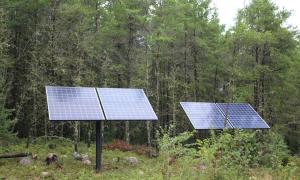
IISD-ELA, which is funded in part through the CFI’s Major Science Initiatives Fund, encompasses a series of 58 natural freshwater lakes and their watersheds in remote northwestern Ontario. It is the only place in the world where scientists can manipulate real lakes to build a more accurate and complete picture of what human activity — from pollution to climate change — is doing to our freshwater resources over the long term. With laboratories, a dining hall and living quarters, IISD-ELA is a self-contained community with up to 60 research personnel.
By incorporating solar panels into their operations, they will reduce diesel fuel use at the site by 80 percent. This will not only reduce greenhouse gas emissions, but will also result in less noise and air pollution from running generators.
Vancouver Island University: Making homemade nitrogen gas means researchers can can those canisters
Kyle Duncan’s research project at Vancouver Island University probes the molecular mechanisms of diseases, such as ovarian tumours, to develop new therapeutic targets. This work relies on mass spectrometry — which requires high-purity nitrogen gas — to visualize how metabolites like lipids, sugars and amino acids are distributed in human tissue.
To avoid the cost and environmental impact of having canisters of the gas delivered to his lab, Duncan will procure a nitrogen generator. This equipment separates nitrogen molecules from oxygen molecules in compressed air on site. Making nitrogen in the lab has a threefold greening impact: it saves emissions from the delivery trucks that drop off nitrogen tanks and haul away the empties; it avoids the energy-intensive process used in a commercial nitrogen plant, which generates waste carbon dioxide, a greenhouse gas; and it keeps canisters, which wear out over time, from the landfill.
Université Laval and Simon Fraser University: Efficiently dealing with supercomputer heat
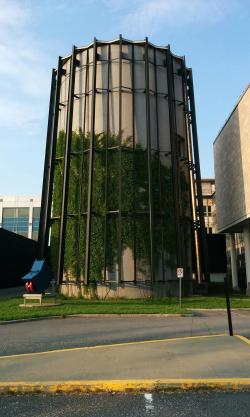
Supercomputers are critical for researchers who need to undertake complex calculations with massive data sets that would be impossible for a conventional computer. This infrastructure can be applied to a range of research questions, from molecular modelling to artificial intelligence. But all that computing generates a lot of heat. In fact, facilities like these use about twice as much energy to cool computer servers as they do on the actual computing.
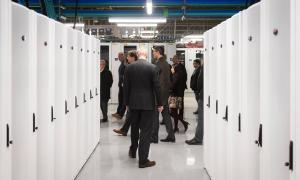
Université Laval’s Colosse supercomputer is putting all that waste heat to good use by redirecting it to the campus heating network. This has resulted in an annual greenhouse gas reduction equivalent to 252 tonnes of carbon dioxide. And Simon Fraser University’s Cedar uses evaporative cooling towers to cool the servers, which is more energy-efficient and cost-effective than traditional air conditioning. This method further reduces greenhouse gas emissions because it uses water instead of harmful refrigerants.
University of Ottawa: Keeping it simple
At the Cell Biology and Image Acquisition Core Facility at the University of Ottawa, it’s the simple things that help make research infrastructure more sustainable. Researchers in the light microscopy core facility combine several small efforts to make a big impact. These include:
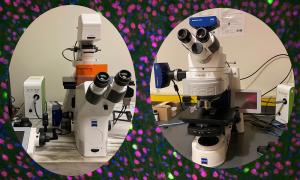
- Replacing mercury-based fluorescent lamps with LEDs
- Shutting down microscopes and computers after every use
- Collecting older microscopes for parts, as well as electric cords and computer fans to repair other lab equipment
- Regularly maintaining and cleaning equipment to extend its life as long as possible
- Recycling any equipment that has reached the end of its life.
“Our story is not exceptional,” says Chloë van Oostende-Triplet, the core facility’s manager. “But when you care about your planet, every single effort counts.”










